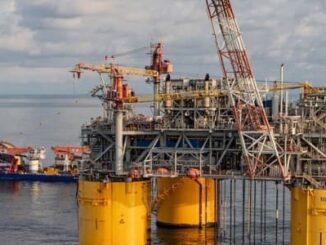
A 60-day comment period is slated to commence Oct. 24 on the Interior Department’s plan to hold the next federal Gulf of Mexico offshore oil and natural gas lease sale in March, according to an Oct. 21 notice placed on file at the Office of the Federal Register.
Gulf of Mexico Lease Sale 259 was slated to take place in 2022 but was among three offshore oil and gas auctions cancelled purportedly over court-related delays and a lack of industry interest. However, the Inflation Reduction Act, enacted in August, included provisions ensuring future oil and gas leasing to secure support from moderate Democrat and fossil fuel-advocate Senator Joe Manchin of West Virginia.
Though raising the costs producers will face to procure federal lands and waters, the historic climate bill requires Interior to hold Lease Sale 258 in Alaska’s Cook Inlet by Dec. 31, and Gulf of Mexico lease sales 259 and 261 by March 31, 2023, and Sept. 30, 2023, respectively.
Interior’s Bureau of Ocean Energy Management posted a proposed notice of sale to its website that indicates its plan to open and announce bids received for Lease Sale 259 on March 29.
Sealed bids are due by 10 am CT March 28, with BOEM proposing a minimum bonus bid of $25/acre for leases in water depths less than 400 meters and $100/acre for all other leases in greater depths.
Comment window
A notice is set to be published in the Federal Register Oct. 24 that formally starts that clock on the 60-day window for the governors of Texas, Mississippi, Florida, Alabama and Louisiana as well as local government officials to review and comment on the proposed size, timing, location and terms of the sale.
Environmental groups have urged the Biden administration to halt offshore drilling but the White House has faced pressure to boost production as geopolitical tensions threatened global oil and natural gas supplies and caused considerable pain at the pump for US drivers.
“Maintaining lease sales is fundamental when it comes to keeping energy flowing,” National Ocean Industries Association President Erik Milito said. “We should never have to depend upon foreign nations for energy when we have the premier, lower carbon energy region which is the Gulf of Mexico.”
Revenues from US Gulf auctions, including high bids, rents and royalties, are distributed to the US Gulf Coast states. Portions of sale monies also go to the US Treasury and two nationwide programs, the Land and Water Conservation Fund and the Historic Preservation Fund.
For Lease Sale 259, BOEM proposed a royalty rate of 18.75% for all leases, with a minimum of $10/acre/year for leases in less than 200 meters’ water depth and $16/acre/year for leases in water depths of 200 meters or more.
Annual rental rates would range from $10/acre to $40/acre, increasing each year after the first five years, for leases in water depths less than 200 meters, and $16-$64/acre for leases in 200 meters to less than 400 meters. Leases in water depths greater than 400 meters would owe $16/acre in annual rent for the first five years and $22/acre thereafter without any further escalation.
Interior will make a decision on how to proceed with Lease Sale 259 after the comment period. A final notice of sale will be published in the Federal Register at least 30 days prior to the scheduled March 29 bid opening, the department said.
Lease Sale 258
BOEM posted a proposed notice of sale for the Cook Inlet auction in September and on Oct. 20 issued a final environmental impact statement for that lease sale slated to take place Dec. 30.
Lease Sale 258 consists of 224 Outer Continental Shelf blocks toward the northern part of the inlet and covers 1.09 million acres of seafloor, stretching roughly from Kalgin Island in the north to Augustine Island in the south, according to BOEM.
The final EIS analyzes the potential environmental impacts from holding the lease sale, as well as from alternative actions including cancelling the sale, excluding certain blocks or taking other actions to mitigate impacts to commercial fishing and beluga whale and northern sea otter populations, for instance.
BOEM laid out a “preferred alternative” that would offer for lease 193 OCS blocks covering almost 990,000 acres. “It defers the 17 OCS blocks wholly or partially overlapping beluga whale and northern sea otter critical habitats; and applies additional mitigation measures to reduce potential impacts to the beluga whales and their critical habitat and feeding areas, sea otters and their critical habitat, and the gillnet fishery,” BOEM said in a statement.
The EIS found mostly minor impacts from post-lease activities to air and water quality and coastal habitats, but the potential for moderate and major impacts if a large oil spill were to occur. Full lifecycle greenhouse gas emissions from oil and gas produced and consumed in the US would be 8.24 million mt of CO2 equivalent higher at 87.06 million mt, when compared with not holding the lease sale, the EIS said.
These findings will be used to draft a final notice of sale and record of decision on the parameters of the lease sale, including any mitigation measures if Interior elects to proceed with one of the alternative approaches.



